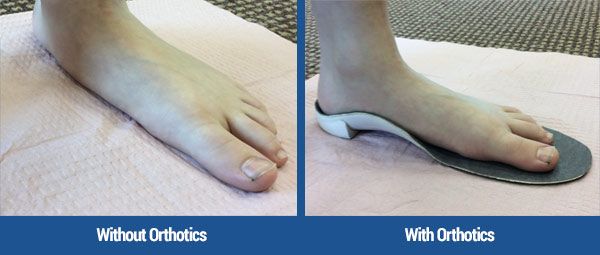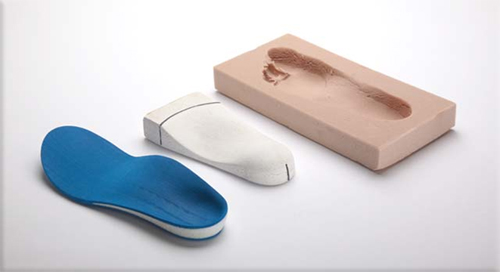Common Boot Fitting Mistakes Golden CO
Common Boot Fitting Mistakes Golden CO
Blog Article
Custom Footbeds for Improved Fit Broomfield CO
Cold feet in ski boots is a typical issue confronted by skiers, affecting their comfort and overall performance on the slopes (How Tight Should New Ski Boots Be? Lafayette CO). Warmth is crucial for an pleasant skiing expertise, and chilly ft can diminish the joys of gliding down a snow-covered mountain. Understanding the reasons behind cold toes in ski boots and methods to combat it could make a big difference in your snowboarding adventures
Ski boots are designed to offer the assist needed for skiing however can also be a supply of discomfort. A tight fit, while crucial for management, can restrict blood circulate, leading to chilly feet. This is especially true if the boots are too small or not properly fitted. Ensuring that ski boots are the best size is step one in preventing chilly feet.
Fitting Criteria for Varied Ski Styles Superior CO
Another issue contributing to chilly feet in ski boots is moisture. When your toes sweat inside the boots, that moisture can result in a chilling effect because the temperature drops. Skiing usually includes excessive energy expenditure, and the heat generated inside the boots can rapidly be lost as sweat accumulates. Using moisture-wicking socks or boot liners can considerably alleviate this problem.
Insulation in ski boots performs a crucial position in preserving feet heat. Many boots include varying levels of insulation, and the selection of material can affect how well they keep heat. Insulated boots are designed to maintain heat in, but deciding on the right level of insulation based on the climate and individual preferences is important. Some skiers favor extra layers, whereas others may find thicker liners too constricting.

Choosing the proper socks is just as crucial as choosing the proper boots. Thick, bulky socks can impede circulation, leading to chilly feet in ski boots. Opting for thin, high-performance ski socks created from materials designed to wick moisture might help maintain toes warm. Additionally, avoid cotton socks as they keep moisture and contribute to cooling down.
Another often-overlooked side is how one dresses for a ski outing. A comprehensive layering system is important. For ski journeys, keeping the whole physique heat ensures that extremities, like the feet, keep heat as well. Investing in quality base layers, mid-layers, and outerwear might help optimize physique temperature and circulation.
DIY Ski Boot Stretching Techniques Thornton CO
Using foot heaters or heated insoles can be notably efficient for these vulnerable to cold feet. These units present an extra heat supply and may be found in various forms, from disposable chemical warmers to rechargeable battery-operated choices. They might help delay comfort throughout the day on the slopes.
Adjusting the method in which you fasten your boots also can make a big distinction. Ski boots must be snug but not overly tight. A too-tight fit can constrict blood flow, leading to cold feet. Learning the method to correctly adjust the buckles can help achieve a comfortable fit that balances warmth and performance.
Take notice of how long you spend standing still versus skiing. Cold toes are sometimes exacerbated by inactivity. During breaks or whereas ready in lines, toes have a tendency to chill down considerably. Making an effort to maintain shifting, even when ready, might help keep warmth.
Ski Boot Fit Trends to Note Brighton CO
Plan your breaks properly. When taking a break, find a warm spot to rest. Stamping your toes or doing easy workout routines can keep your blood circulating and prevent chilly toes in ski boots. Remaining conscious of your physique's temperature can guide well timed interventions to maintain heat locked in.
Remember that choosing the proper ski resort and situations also can have an result on how cold feet feel. Some locations are identified for his or her biting winds and decrease temperatures. More protected ski areas with sunnier situations can present a better skiing expertise. Thus, the selection of snowboarding location can indirectly influence how chilly or heat your ft feel all through the day.
Finally, staying hydrated is essential. When the body is well-hydrated, circulation improves, which is essential for sustaining heat. It’s straightforward to forget to drink water whereas concerned in activities, especially in chilly climate, but making a conscious effort to remain hydrated can have vital benefits.

Addressing chilly toes in ski boots usually entails trial and error, adapting gear and methods to seek out the perfect solution for particular person wants. Every skier is totally different, and what works for one individual might not work for one more. It’s necessary to experiment with varied socks, boot types, and layering methods to search out the best mixture for oneself.
Ski Boot Fit Adjustments Tips Northglenn CO
Ultimately, having fun with skiing to the fullest requires consideration to the little issues that impact comfort and performance. Understanding the causes of cold feet in ski boots and implementing methods to stop it can remodel a cold ski day into an exhilarating expertise. By maintaining feet heat, skiers can concentrate on soaking in the beauty of the mountains and the fun of the journey.
Cold feet shouldn't be a recurring challenge however quite an opportunity for skiers to refine their setup and techniques. Emphasizing warmth and luxury ensures a extra enjoyable day on the slopes, permitting for longer and more fulfilling runs. Each skier can take proactive steps to mitigate the chill, turning snowboarding into a joyous winter journey quite than a battle in opposition to the cold.
As the season unfolds, keep in thoughts that snowboarding is about enjoying the mountains, the fresh air, and the thrill of gliding on snow. Keeping cold ft at bay enhances every facet of the experience, permitting for a give attention to method and enjoyment somewhat than discomfort.
Fit Guide for Ski Boots Erie CO
Finding pleasure in skiing is feasible by addressing everything from boot fit to sock selection, layering, and hydration. By prioritizing these parts, skiers can ensure they've the correct measures in place in opposition to cold ft, allowing each journey down the slope to be as exhilarating as intended.
- Proper fit of ski boots is essential; too much room can lead to cold toes because of insufficient blood circulation.
- Insulating footbeds created from supplies like gel or specialized foam can enhance warmth by offering thermal safety.
- Toe warmers or heated insoles are efficient accessories to fight cold toes, especially in extremely low temperatures.
- Keeping feet dry is crucial; moisture from sweat can lead to significant cooling, so moisture-wicking socks are beneficial.
- Choosing the proper socks, typically produced from merino wool or synthetic blends, can considerably enhance heat and comfort.
- Periodically taking breaks allows for foot movement and circulation, serving to to alleviate numbness and enhance warmth.
- Ensure that ski boots usually are not overly tightened, which may prohibit blood circulate and contribute to cold sensations.
- Tuning the boot’s insulation degree based on weather circumstances can keep toes hotter; contemplate models with adjustable options.
- Using ski boot heaters or foot warmers can present a consistent source of heat throughout long outings on the slopes.
- Familiarizing oneself with layering methods for ski gear also can assist in preventing cold feet by maintaining general body heat.undefinedWhat causes chilly feet in ski boots?
Exploring Customization Options for Fit Westminster CO
Cold toes in ski boots is typically brought on by poor circulation, inadequate insulation, or moisture within the boot. If your ft are chilly, it may mean your boots are either too tight, not warm enough, or not fitted properly.
How can I forestall chilly toes whereas skiing?
To prevent chilly ft, ensure your ski boots fit properly with out being overly tight. Use moisture-wicking socks made from wool or synthetic supplies, and contemplate boot heaters or heated insoles for added warmth.
Custom Footbeds for Improved Fit Erie CO
Are ski socks important for keeping my feet warm?
Yes, ski-specific socks are designed to provide warmth whereas permitting moisture to flee. They are typically thicker around key areas like the toes and shin, enhancing insulation with out compromising comfort.
Is it okay to wear two pairs of socks in ski boots?
Wearing two pairs of socks can actually limit circulation, resulting in colder feet. It’s better to choose on a single, well-fitted moisture-wicking sock designed for skiing.
Custom Footbeds for Improved Fit Loveland CO
What ought to I do if my feet get cold while skiing? (Importance of Boot Fitting Northglenn CO)
If your feet become cold, take a break to heat them up. Remove your boots for a couple of minutes, wiggle your toes, and contemplate including foot heaters or transferring to a hotter setting, if attainable.
D.I.Y. Boot Fitting Part 1 Guide Westminster CO
Can boot liners assist with cold feet?
Yes, high-quality boot liners can considerably enhance insulation and warmth. Consider custom or heat-moldable liners that conform to your foot, enhancing both comfort and thermal management.
How necessary is boot slot in stopping chilly feet?
A proper boot fit is crucial for stopping cold feet. Boots must be cosy but not overly tight, permitting for good circulation while keeping heat contained. Poor fitting can result in pressure points, proscribing blood circulate.
Testing Fit During Ski Activities Nederland CO
Do the type of ski boots affect warmth?
Absolutely. Insulated or high-performance ski boots typically present better thermal protection. Research the precise options of trainers, as some models prioritize heat together with performance.
Ski Boot Sizing Guidelines Broomfield CO
Should I be concerned about moisture in my ski boots?
Yes, moisture can contribute to cold feet. Always dry your boots totally after every use, and consider using waterproof boots or gaiters to maintain snow and moisture out while snowboarding.
What are some indicators that my ski boots are too tight?
Boot Fitting and Repair Services Golden CO
Signs that your ski boots are too tight include tingling or numbness in your toes, cold ft, or noticeable discomfort when wearing them - Master Boot Fitting Techniques Frederick CO. If you expertise any of these, consider getting a professional fitting or adjusting the boot dimension
check my site my blog Report this page